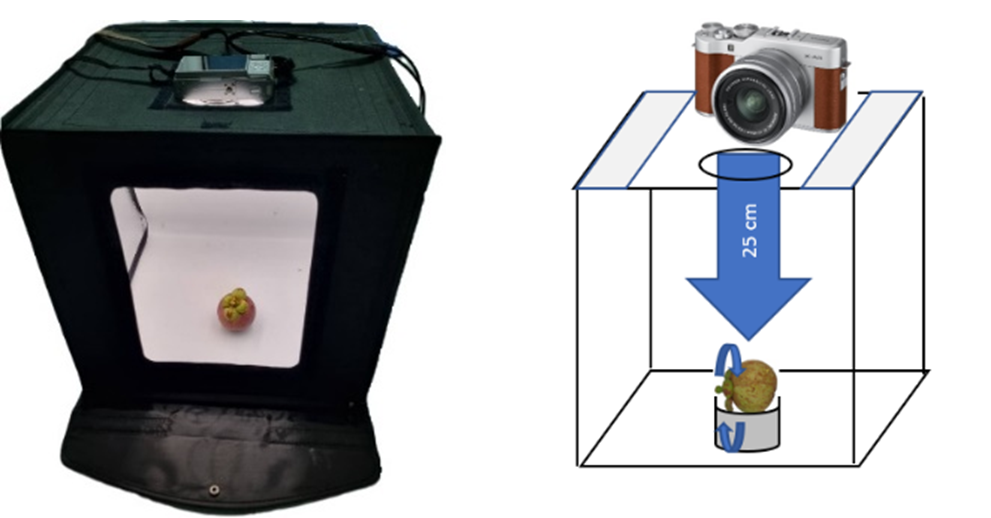Measuring damaged skin of mangosteen using image processing
Main Article Content
Abstract
Mangosteen is a major economic crop. Currently, commercial production still faces challenges in terms of quality sorting, particularly in adhering to the skin color standards which serve as quality criteria. Presently, quality sorting heavily relies on the expertise of individuals, especially for mangosteen with damaged skin, which cannot be exported. Advances in image processing technology allow for quality sorting, thus this research aims to examine mangosteen with damaged skin using image processing techniques. A sample of 60 mangosteen fruits at six maturity levels, with 20 fruits per level, images were taken from four sides using RGB cameras, totaling 480 images. These images were analyzed and models were built for distinguishing between good skin and damaged-skinned mangosteen using Linear Discriminant Analysis (LDA), Support Vector Machine (SVM), and Decision Tree (Fine Tree) algorithms. Results showed that all three algorithms performed similarly performance. For levels 1 through 6, the average accuracy rates were approximately 100, 95.61, 93.03, 99.63, 99.40 and 100, respectively, with average recall rates of 100, 96.60, 94.45, 99.90, 99.73, and 100, respectively. Analysis revealed that evaluating damaged skin at levels 2 and 3 had the lowest effectiveness, as the good skin colors of mangosteen at levels 2 and 3 closely resembled the colors of the damaged skin. Therefore, the research demonstrates that image processing can effectively separate damaged-skinned mangosteen from good-skinned.
Article Details

This work is licensed under a Creative Commons Attribution-NonCommercial-NoDerivatives 4.0 International License.
References
Office of Agricultural Economics. Export and import statistics [Internet]. 2024 [cited 2024 June 20]. Available from: https://impexpth.oae.go.th/export.
National Bureau of Agricultural Commodity and Food Standards. Agricultural product standards, mangosteen. Bangkok: National Bureau of Agricultural Commodity and Food Standards, Thailand. 2014.
Rajamangala University of Technology Krungthep. Report on the performance of the project under the strategic plan for sustainable development [Internet]. 2022 [cited 2024 June 20]. Available from: http://sdg.rmutk.ac.th/files/projects/2022.
Momin MA, Rahman MT, Sultana MS, Igathinathane C, Ziauddin ATM, Grift TE. Geometry-based mass grading of mango fruits using image processing. Information Processing in Agriculture. 2017;4(2):150-60. https://doi.org/10.1016/j.inpa.2017.03.003.
Thammastitkul A, Klayjumlang T. Mangosteen quality grading for export markets using digital image processing techniques. International Journal of Advanced Science Engineering Information Technology. 2021;11(6):2452-58. https://doi.org/10.18517/ijaseit.11.6.14003.
Ditcharoen S, Sirisomboon P, Saengprachatanarug K, Phuphaphud A, Rittiron R, Terdwongworakul A, Posom J. Improving the non-destructive maturity classification model for durian fruit using near-infrared spectroscopy. Artificial Intelligence in Agriculture. 2023;7:35-43. https://doi.org/10.1016/j.aiia.2023.02.002.
Chotichatmala S. A single-type fruit sorting model using machine learning for apple detection. Nakhon Nayok: Srinakharinwirot University, Thailand. 2020.


